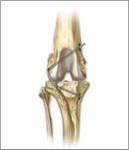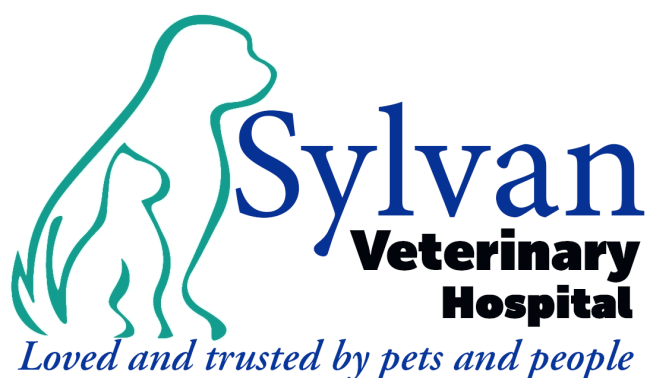
Cranial Cruciate Ligament (CCL) disease is thought to be mostly a degenerative disease of the cruciate ligament in the dog, although traumatic rupture of the ligament can occur in some cases.
It is one of the most common orthopedic conditions encountered in dogs, with certain breeds (retrievers, Stafford bull terriers, mastiffs, etc.) being over-represented.
While numerous techniques have been developed over the years, none have proved optimal in terms of limiting the progression of degenerative changes to the knee joint or avoiding potential complications which may require further surgical intervention.
Current repair techniques center on neutralizing the tibial thrust that occurs with CCL ruptures, during the weight-bearing phase. Techniques can be split into two broad categories:
-
Extracapsular techniques attempt to eliminate tibial thrust by approximating the Cranial Cruciate Ligament attachments outside the joint with various types of suture material and anchor points. The TightRope® technique uses a braided material, which has shown to have significantly superior biomechanical properties (start video at minute 21 for biomechanical data) compared to other commonly used suture materials. When done correctly, the TightRope® technique also has the advantage of reproducible accuracy in the reconstruction of the CCL ligament using isometric anchor points, and superior fixation security via bone tunnels. Other “lateral suture” techniques either don’t use isometric anchor points, or use bone anchors rather than tunnels for isometry that tend to have high failure rates (pull out of the bone), particularly as the activity level, weight, and size of the dog increases.
-
Osteotomy (bone cutting) techniques namely the Tibial Plateau Leveling Osteotomy (TPLO) and Tibial Tuberosity Advancement (TTA) attempt to neutralize dynamic or functional tibial thrust during the weight-bearing phase.
So what are the Benefits of TightRope® over TPLO and TTA?
-
TightRope® neutralizes both dynamic and passive knee laxity (tibial thrust), and addresses excessive internal rotation of the tibia. Both TPLO and TTA only address one of the problems, dynamic laxity and not excessive internal rotation.
-
TightRope® has superior biomechanical properties, isometric anchor points, and superior fixation security when compared to other “lateral suture” techniques.
-
Scientific research (start video at minute 22 for scientific research) found TightRope® in head to head comparisons to TPLO to have equivalent clinical outcomes in percent of patients reaching full function out 6 months and longer from surgery (94% return good function). Both TightRope® and TPLO had significantly better clinical outcomes than TTA, which was shown to have only 89% return to good function in this study.
-
Research has shown TightRope® to have significantly fewer complications in both overall rate and severity. Therefore, TightRope® has been clinically proven to have the highest safety to efficacy ratio for CCL stabilization in dogs.
-
TPLO has long been viewed as the “gold standard” for cruciate repair, particularly in the canine athlete and giant breed dogs. When scientific rigor was applied to over 2,500 cases in 43 surgical centers worldwide, it was found that TightRope® was equivalent in clinical outcomes when followed out 1 year and longer from surgery, in dogs weighing as much as 200 lbs.
-
The TightRope® technique requires no cutting of the bone and therefore is minimally invasive, far less painful, promoting a quicker surgical recovery.
-
Due to the simplicity of TightRope® and the minimally invasive nature, the repair tends to be more affordable when compared to the TPLO and TTA.
Based on current research, we at Sylvan Veterinary Hospital feel the evidence is clear and compelling for choosing TightRope® as the safest and preferred technique for stabilizing the majority of CCL ruptures in our patients.
Regardless of the procedure you chose, one of the most important aspects for a quick and successful return to full function is the attention to the quality of the post-operative care given in the first 8 weeks. It is very important to keep your pet’s activity controlled and put them through a well-designed rehabilitation program to ensure pain reduction, good joint function, and proper connective tissue healing.
